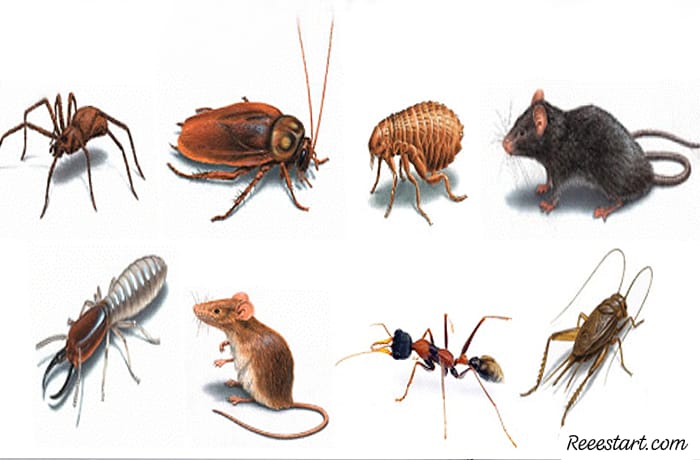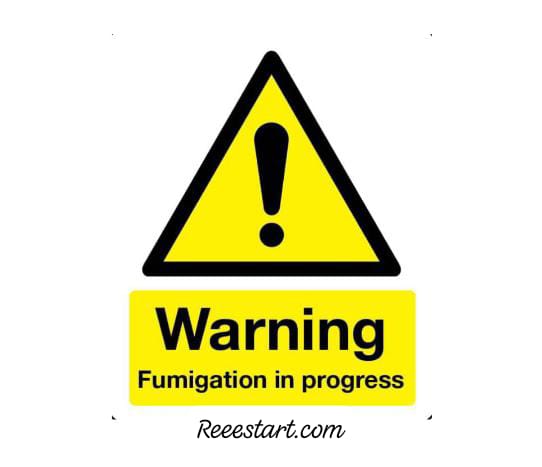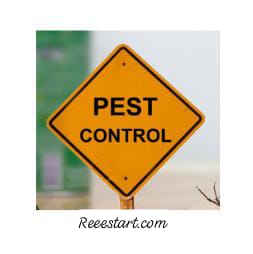Health Risks Associated with Common Pests are a matter must be put into consideration to keep our health, as Pests are an inevitable part of our environment, often invading our homes and communities in search of food, shelter, and warmth. Among these pests, certain insects and rodents pose significant health risks that can affect our well-being and quality of life. This article delves into the health hazards associated with common pests, including rats, flies, mosquitoes, ants, and bed bugs. Each of these creatures carries the potential to transmit diseases, cause allergic reactions, and disrupt our daily lives. By understanding the dangers they present, we can take proactive measures to mitigate their impact and protect our health. Join us as we explore the specific risks posed by these common pests and the importance of effective pest management.
- Health Risks Associated with Rats
- Health Risks Associated with Flies
- Health Risks Associated with Mosquitoes
- Health Risks Associated with Ants
- Health Risks Associated with Bed Bugs
The Health Risks Associated with Cockroaches
Cockroaches are not only an unpleasant sight in our homes and businesses; they are also potential carriers of various diseases that can pose serious health risks to humans. Understanding the diseases associated with cockroaches is crucial for effective pest control and maintaining a healthy environment.
Asthma and Allergies
One of the most significant health concerns related to cockroaches is their role in triggering asthma and allergic reactions. Cockroach droppings, saliva, and body parts contain allergens that can exacerbate respiratory issues, particularly in children and individuals with pre-existing conditions. Studies have shown that exposure to these allergens is a common cause of asthma attacks and can lead to chronic respiratory problems.
Salmonellosis
Salmonellosis is a bacterial infection that can occur when food or surfaces are contaminated with cockroach feces. Symptoms of salmonellosis include diarrhea, fever, and abdominal cramps. The bacteria can survive in a variety of environments, making it essential to maintain proper sanitation to prevent contamination.
E. coli Infections
Cockroaches are known to carry E. coli bacteria, which can lead to severe gastrointestinal issues, including diarrhea and stomach cramps. These infections are particularly concerning in food preparation areas, where contamination can easily occur if proper hygiene practices are not followed.
Typhoid Fever
While less common today, cockroaches can potentially transmit the bacteria responsible for typhoid fever. This serious illness is characterized by high fever, fatigue, and gastrointestinal symptoms. Maintaining cleanliness and proper pest control can help mitigate this risk.
Gastroenteritis
Gastroenteritis, an inflammation of the stomach and intestines, can be caused by various viruses and bacteria. Cockroaches can contaminate surfaces and food with pathogens that lead to this condition. Symptoms typically include diarrhea, vomiting, and abdominal pain, which can be particularly severe in vulnerable populations.
Leptospirosis
Although primarily associated with rodents, cockroaches can also act as vectors for leptospirosis, a bacterial infection that can cause a range of symptoms from mild flu-like signs to severe illness. This disease is typically contracted through contact with contaminated water or soil.
The presence of cockroaches in living and working environments poses significant health risks. Their ability to carry and transmit various pathogens can lead to serious illnesses, particularly in sensitive populations. Effective pest control measures, including maintaining cleanliness, proper food storage, and regular inspections, are essential to mitigate these risks. By understanding the potential dangers associated with cockroaches, we can take proactive steps to protect our health and well-being.
Health Risks Associated with Rats
Rats are common pests that can pose serious health risks to humans. Understanding the diseases linked to rats is crucial for maintaining a healthy environment and effective pest control.
Leptospirosis
Leptospirosis is a bacterial infection that can be transmitted through contact with water or soil contaminated with rat urine. Symptoms range from mild flu-like signs to severe illness, particularly in individuals with weakened immune systems.
Hantavirus Pulmonary Syndrome
Hantavirus Pulmonary Syndrome is caused by hantaviruses and can be contracted through contact with rat droppings, urine, or saliva. Symptoms include fever, cough, and difficulty breathing, which can be life-threatening in some cases.
Salmonellosis
Rats can transmit Salmonella when food is contaminated with rat feces. Symptoms include diarrhea, fever, and abdominal cramps, requiring medical attention in some instances.
Lymphocytic Choriomeningitis (LCMV)
LCMV can be transmitted through contact with infected rats or their droppings. This viral infection may lead to symptoms ranging from fever and headache to more severe neurological complications.
Plague
While primarily associated with fleas, rats can carry the bacteria responsible for plague. Transmission occurs through flea bites or direct contact with infected rats, and it can be fatal if not treated promptly.
Rat-Bite Fever
Rat-Bite Fever is a bacterial infection that occurs from bites or scratches from infected rats. Symptoms include fever, rash, and joint pain, requiring medical intervention.
Tularemia
Tularemia can be transmitted through contact with infected animals, including rats. Symptoms may include fever, headache, and fatigue, and it can be serious if not treated.
Rats pose a significant health risk in residential and commercial environments. Their ability to carry and transmit various pathogens can lead to serious illnesses, especially in vulnerable populations. Maintaining cleanliness, proper food storage, and effective pest control measures are essential to reduce these risks. By understanding the potential dangers associated with rats, we can take proactive steps to protect our health and safety.
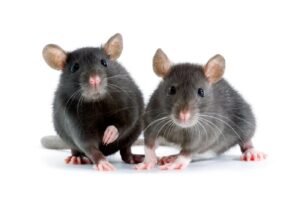
Health Risks Associated with Flies
Flies are common pests found in many environments, and they can pose significant health risks to humans. Understanding the diseases transmitted by flies is essential for effective pest control and maintaining public health.
Salmonellosis
Flies can carry Salmonella bacteria, which can contaminate food and surfaces. When ingested, these bacteria can cause gastrointestinal illness, characterized by symptoms such as diarrhea, fever, and abdominal cramps.
E. coli Infections
Certain species of flies can transport E. coli bacteria, which can lead to severe digestive issues. Contamination typically occurs when flies land on food or food preparation surfaces after being in contact with feces.
Typhoid Fever
Flies are potential vectors for typhoid fever, a serious bacterial infection caused by Salmonella Typhi. This disease can be contracted through contaminated food or water and may lead to high fever, fatigue, and abdominal pain.
Cholera
Flies can transmit the Vibrio cholerae bacterium, responsible for cholera, particularly in areas with poor sanitation. Infection can lead to severe diarrhea and dehydration, which can be life-threatening if untreated.
Gastroenteritis
Flies can act as carriers for various pathogens that cause gastroenteritis. By contaminating food or surfaces, they can contribute to outbreaks of this condition, which results in diarrhea, vomiting, and stomach cramps.
Helminth Infections
Flies can also be involved in the transmission of helminths (parasitic worms). They may carry larvae or eggs that can infect humans, leading to various health issues depending on the type of helminth involved.
Flies are more than just a nuisance; they pose significant health risks due to their ability to carry and transmit various pathogens. Proper sanitation, effective waste management, and pest control measures are essential to reduce the risk of fly-borne diseases. By understanding the health threats associated with flies, we can take proactive steps to protect our health and well-being.
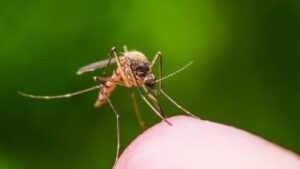
Health Risks Associated with Mosquitoes
Mosquitoes are not only annoying pests; they are also major vectors of various diseases that pose serious health risks to humans, Understanding the diseases transmitted by mosquitoes is essential for effective pest control and public health awareness.
Malaria
Malaria is one of the most well-known mosquito-borne diseases, caused by parasites transmitted through the bites of infected Anopheles mosquitoes. Symptoms include fever, chills, and flu-like illness, and it can be life-threatening if not treated promptly.
Dengue Fever
Dengue fever is transmitted by Aedes mosquitoes, particularly Aedes aegypti. Symptoms include high fever, severe headaches, joint and muscle pain, and rash. Severe cases can lead to dengue hemorrhagic fever, which can be fatal.
Zika Virus
The Zika virus, primarily spread by Aedes mosquitoes, can cause mild symptoms such as fever and rash. However, it poses significant risks to pregnant women, as it can lead to severe birth defects in the fetus, including microcephaly.
West Nile Virus
West Nile virus is transmitted by Culex mosquitoes. Most infected people experience mild symptoms, but in some cases, it can lead to serious neurological diseases, including encephalitis and meningitis.
Chikungunya
Chikungunya is another viral disease transmitted by Aedes mosquitoes. Symptoms include high fever and severe joint pain, which can be debilitating. Although rarely fatal, the joint pain can persist for months.
Yellow Fever
Yellow fever is a viral disease spread by Aedes and Haemagogus mosquitoes. Symptoms range from fever and chills to severe liver damage, which can be fatal. Vaccination is the most effective prevention method.
Rift Valley Fever
Rift Valley fever is primarily a disease of livestock but can affect humans. Transmitted by mosquitoes, it can cause flu-like symptoms and, in severe cases, lead to liver damage and hemorrhagic fever.
Mosquitoes are significant vectors of various diseases that can have serious health implications for humans. Effective mosquito control measures, including eliminating standing water, using insect repellent, and promoting community awareness, are crucial in reducing the risks associated with mosquito-borne diseases. By understanding the health threats posed by mosquitoes, we can take proactive steps to protect ourselves and our communities.
Health Risks Associated with Ants
Ants are common insects found in many environments, and while they are often considered harmless, some species can pose health risks to humans. Understanding the potential dangers associated with ants is essential for effective pest management and public health awareness.
Allergic Reactions
Some individuals may experience allergic reactions to ant bites or stings, particularly from fire ants. Symptoms can range from mild irritation and itching to severe reactions, including anaphylaxis, which requires immediate medical attention.
Food Contamination
Ants are known to invade homes in search of food. When they contaminate food supplies, they can transmit bacteria and pathogens, leading to foodborne illnesses. This is particularly concerning in food preparation areas.
Salmonellosis
Certain ant species can carry Salmonella bacteria, which may contaminate food or surfaces. Ingesting contaminated food can cause gastrointestinal illness characterized by diarrhea, fever, and abdominal cramps.
E. coli Infections
Ants can also be vectors for E. coli bacteria, potentially leading to serious digestive issues. This transmission often occurs when ants come into contact with food or food preparation surfaces after being in contaminated areas.
Disease Transmission
While ants are not primary vectors for many diseases, some species can carry pathogens that contribute to the spread of illnesses. For example, they may transport bacteria from decaying matter or waste, posing a risk in certain environments.
Structural Damage
Certain ant species, such as carpenter ants, can cause significant structural damage to buildings by tunneling through wood. While this is not a direct health risk, the resulting damage can create unsafe living conditions.
While ants are often seen as minor nuisances, they can pose various health risks, particularly when it comes to food contamination and allergic reactions. Effective pest control measures, including maintaining cleanliness, sealing food, and properly managing waste, are essential to mitigate these risks. By understanding the potential dangers associated with ants, we can take proactive steps to protect our health and safety.
Health Risks Associated with Bed Bugs
Bed bugs are small, nocturnal insects that feed on the blood of humans and animals. While they are not known to transmit diseases directly, their presence can lead to various health risks and complications. Understanding these risks is essential for effective pest control and personal well-being.
Allergic Reactions
Many people are allergic to bed bug bites, which can lead to severe itching, redness, and swelling at the bite site. In some cases, individuals may experience anaphylaxis, a serious allergic reaction that requires immediate medical attention.
Secondary Infections
The itching and scratching caused by bed bug bites can lead to secondary skin infections. Bacteria can enter the skin through broken skin, resulting in conditions such as cellulitis or impetigo, which may require antibiotics for treatment.
Sleep Disturbances
The presence of bed bugs can cause significant anxiety and stress, leading to sleep disturbances. Individuals may experience insomnia or anxiety due to fear of being bitten, which can negatively impact overall health and well-being.
Mental Health Effects
Infestations can lead to psychological distress, including anxiety and depression. The stress of dealing with a bed bug infestation can affect a person’s quality of life and emotional well-being.
Social Stigma
People dealing with bed bug infestations may face social stigma or embarrassment, leading to isolation and reduced social interactions. This can further exacerbate mental health issues.
While bed bugs are not known to transmit diseases, their presence can lead to various health risks, including allergic reactions, secondary infections, sleep disturbances, and mental health effects. Effective pest control measures, including thorough cleaning and professional extermination, are crucial in managing and preventing infestations. By understanding the potential health impacts of bed bugs, we can take proactive steps to protect our health and well-being.

